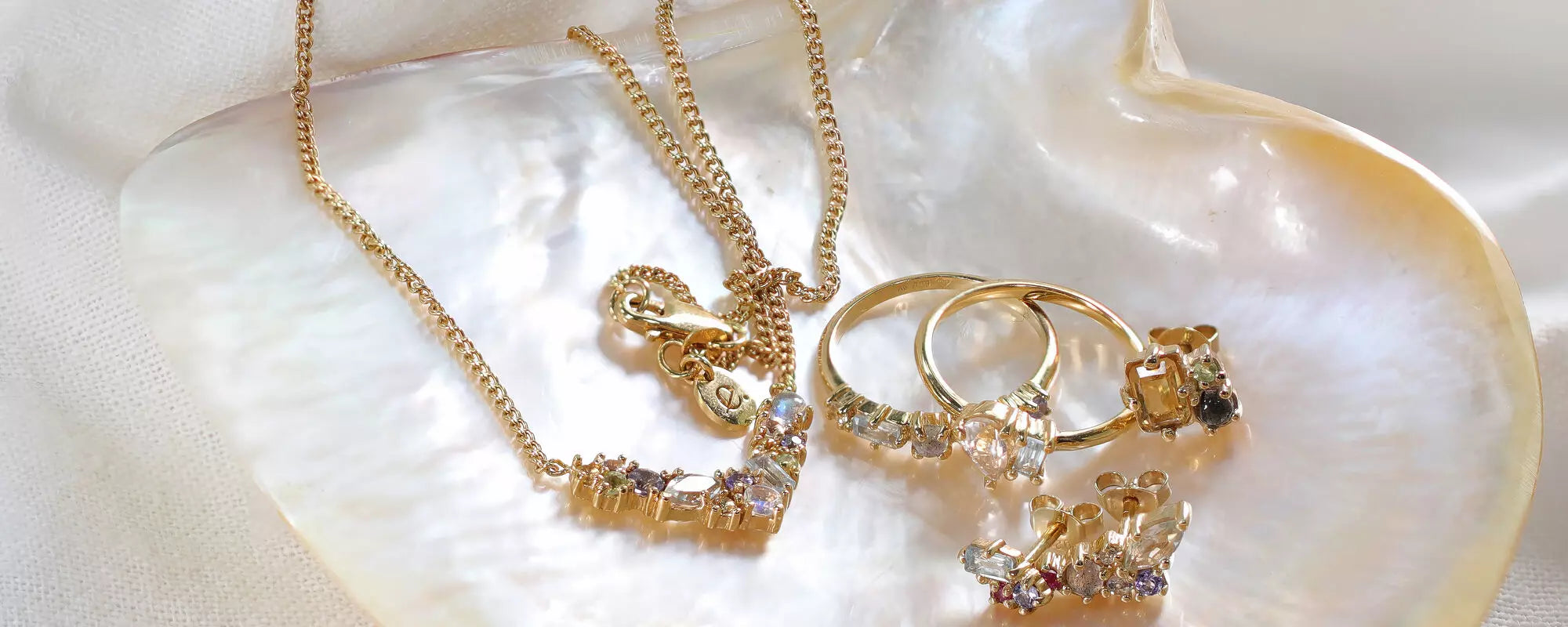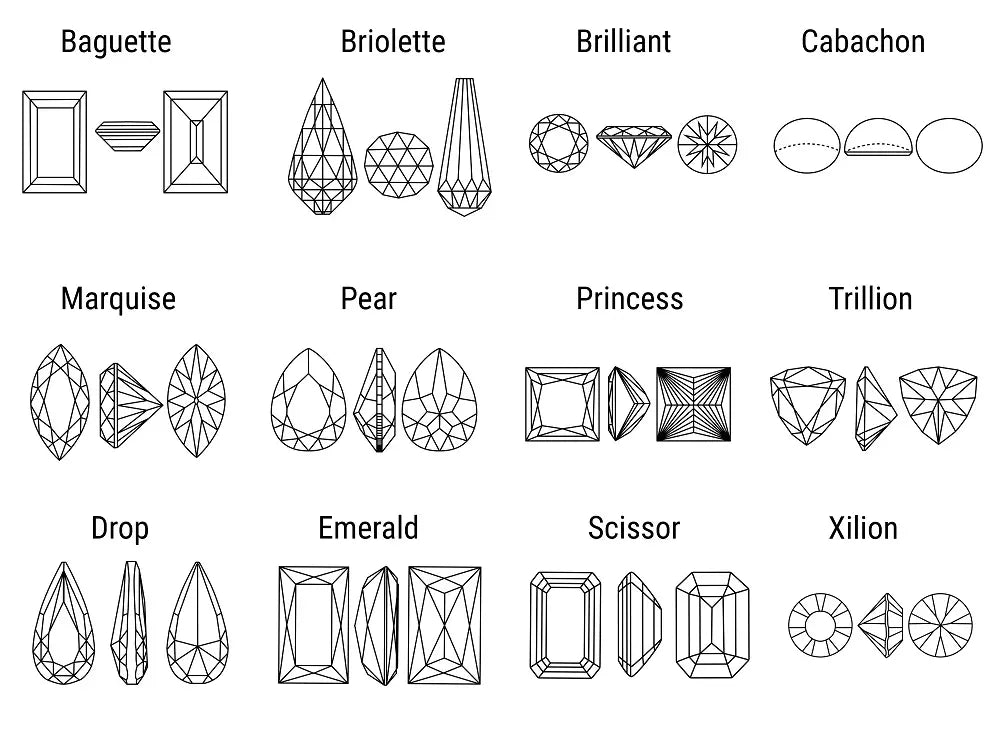SETTINGS AND STONE CUTTING

stone cuts

Baguette cut:
The baguette cut is characterized above all by its simplicity and its clear lines, the stepped facets make a gemstone cut in this way appear almost transparent and glassy
brilliant cut:
The brilliant cut is a type of cut that is particularly popular with diamonds. The brilliant cut gives the diamond a circular appearance. 32 facets are seen in the crown, 24 in the base and one facet serves as the table facet. Due to the refraction of light and the shape, the diamond has become a coveted gemstone that can be incorporated into many pieces of jewellery.
briolette cut:
The briolette cut is a pear-shaped cut with small triangular facets, which is particularly suitable for jewelry pendants.
cabochon cut:
The cabochon cut shape is round to oval. The cut stone has a convex curved surface and a flat underside.
marquise cut:
The marquise cut is a faceted cut whose oval shape is reminiscent of a ship's hull. Another name for this type of cut is the so-called "navette cut".
pearl cut:
Stones are cut in pearl cut when they are completely round or roughly round.
princess cut:
The princess cut is a very high-quality cut with an almost square outline. The princess cut creates an excellent sparkle with very good use of the natural diamond material and allows inclusions and flaws to be relatively inconspicuous.
trillion cut:
The special thing about the trillion cut is the triangular shape of the precious or gemstone.
pear cut:
This cut is reminiscent of the shape of a drop.
scissors cut:
Crossed, i.e. scissor-like, facets are the characteristic feature of the scissor cut, to which it also owes its name.
emerald cut:
Since emeralds are usually very brittle, this type of cut is best suited. This is a stepped end product with blunt corners.
Xilion cut:
The Xilion cut is the biconical faceting, which is the classic among high-quality crystals. The elaborate faceting, combined with the high quality of the material, leads to exciting light reflection.

frames
prong setting:
The claw setting is ideal for emphasizing a stone. The stone is clamped in "claws" from all sides, the prong setting is therefore also referred to as a claw setting.
Mantle mount:
With the mantle setting, depending on the type of design, the stone is set in a mantle-like precious metal embellishment.
pavé setting:
The setting of a piece of jewelry is called pavé setting when a large number of small gemstones of the same shape are held in or on the piece of jewelry using this method.
clamping socket:
The tension setting was originally developed for platinum rings and was intended to hold the diamond firmly to the material only through the force of the tension. This creates the impression that the stone is "floating" in the ring.
bezel setting:
The bezel setting frames the gemstone with a thin layer of silver
